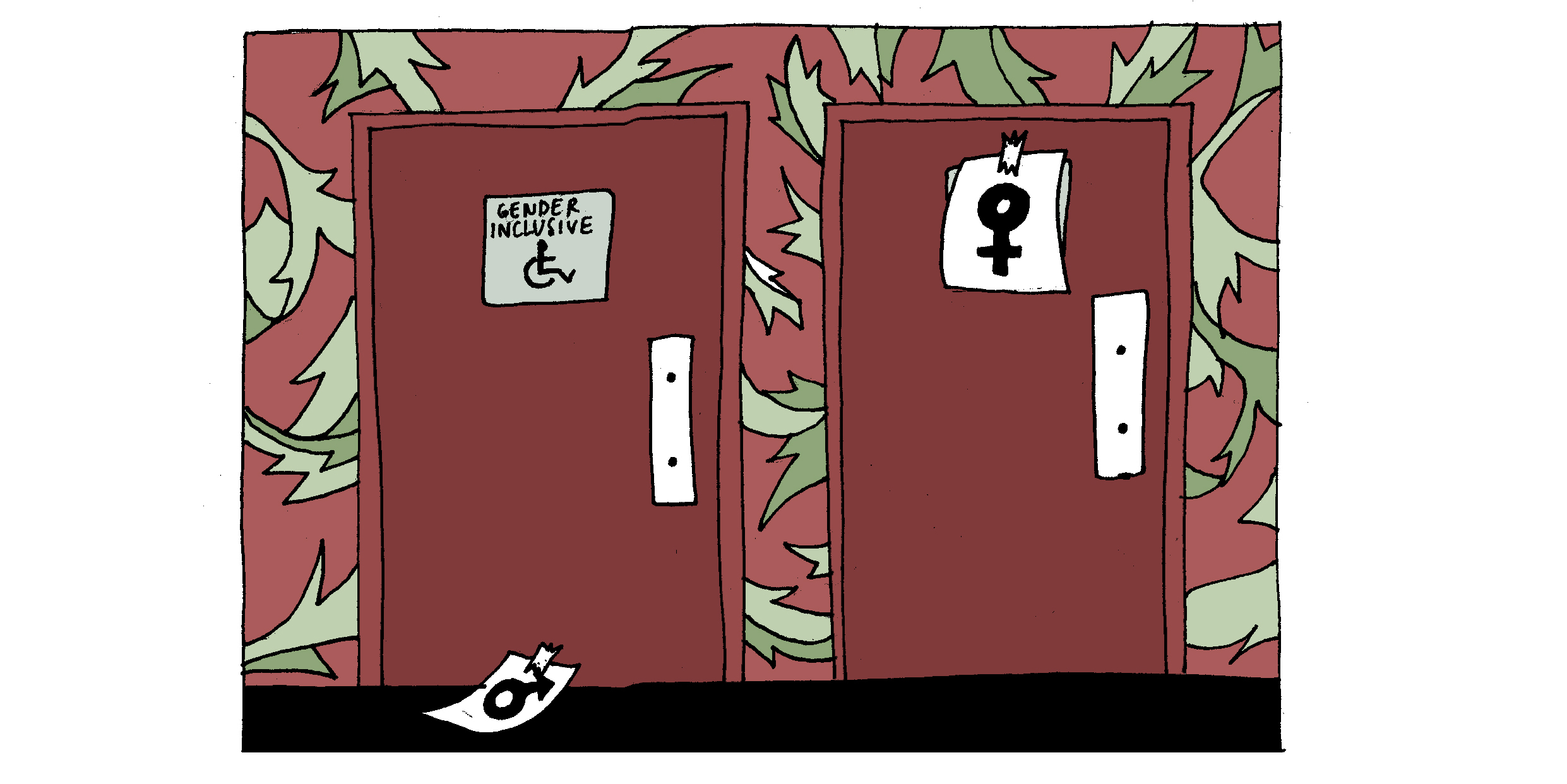Queer faces, straight places: inclusion at Bowdoin
April 13, 2018
 This
piece represents the opinion of the author
.
This
piece represents the opinion of the author
.
 Jenny Ibsen
Jenny IbsenLast Thursday night, I attended my first “underground queer party.” Inspired by Wesleyan’s biweekly “secret gay keg parties,” this was intended to bring together and revitalize Bowdoin’s lackluster queer community. This party wasn’t the local gay club I frequented abroad, replete with handsome men in their mid-twenties, strobe lights, drag queens and complimentary drinks. Nor was it the drug-induced, queer utopia that I imagine my Wesleyan counterparts might enjoy. But it was an important alternative queer space for the night.
My night (and slight hangover the next morning) prompted me to meditate on what an “underground queer party” does for Bowdoin’s queer community and campus more broadly. As a cis-gendered white male, I do not claim to speak on behalf of the queer community at Bowdoin; there are a multitude of experiences and identities that navigate campus in different ways and who face greater discomfort and marginalization than I do.
While 24 College provides a physical queer space for people of all genders and sexualities, it is the only such space on campus. And though the center is an essential space for many, by no means does it meet the diverse needs of all queer students on campus. In calling for queerer spaces on campus, I am not asking the College to buy up the remaining properties on College Street and create more centers for gender and sexual diversity. I am asking us, however, to critically examine how Bowdoin’s physical and social structures reproduce heteronormativity and marginalize queer identity. Calling for more queer space and visibility necessitates deconstructing, figuratively and perhaps literally, heteronormative space on campus.
Bowdoin’s campus is regulated by heteronormativity as “normative” gender identities and relationships are put on public display. For the most part, we eat, study, recreate and cohabitate with friends of the same gender, creating gendered spaces that reproduce heteronormative norms. As first years, we are placed into living situations based on our gender identity. We live with people of the same gender and use gender-segregated bathrooms, though Bowdoin has taken steps to become more inclusive in first year rooming assignments.
Even as upperclassmen, we reproduce this gender segregation with binary living spaces on and off campus. While I certainly understand the value of female living spaces, all-male spaces, particularly when tied to sports teams, breed exclusivity and toxic masculinity, exacerbated by the drinking culture and party scenes that these houses promote. I do recognize, however, that gender-segregated spaces do not preclude queer membership and that, furthermore, queer students living in these environments may not feel comfortable being “out.”
Sports teams are also gendered spaces and breeding grounds for heteronormativity. Even before orientation, many first years form close friend groups based on gender and often maintain these tight circles throughout their four years. This is not to say that sports teams are not inclusive (many teams have queer and trans students and are welcoming groups), but rather to suggest that a central pillar of Bowdoin operates along a rigid gender binary. We also reproduce and elevate heteronormativity off the fields. Art and theatre publicly display largely heterosexual relationships through plays and public galleries across campus, catering to a straight audience.
Dining halls are also innocuously coded spaces. When we see a man and a woman eating together, we often assume that it is a date. Or if we see them at Saturday morning brunch, it means that they rolled out of bed together. Female friends have expressed fear of this assumption when eating with male companions in their earlier Bowdoin years. Perhaps as a man, I was not attuned to this anxiety. Or perhaps, more likely, this assumption does not exist for queer folk. The few times that I have had meals with a romantic or sexual interest, do others interpret this as such? Or is it just assumed that we are two male friends chatting over a meal?
Across campus, we are taking steps towards creating more inclusive spaces, such as the gender neutral bathrooms on the second floor of Smith Union. At the same time, these changes highlight the difficulty in breaking down binaries and restructuring space. I have been conditioned to enter the bathroom closest to the stairs—the one that was previously “male.” Perhaps new students don’t have preferences and routines, and perhaps gender neutral bathrooms may not even be novel concepts for them.
Bowdoin should continue to create gender inclusive bathrooms, and we should be critical of how gender and sexual orientation structure in our friend groups. But in the meantime, I am going to revel in ephemeral queer spaces. Last week, as I chatted and danced and sipped cheap wine, I felt carefree and comfortable in the physical space provided by that living room. Queer couples sitting in the corner of the living room or making out in the middle of the improvised dance floor were not a spectacle as they might be under the cis-gendered, heterosexual gaze of a College House basement. Instead, this queerness was the norm.

Comments
Before submitting a comment, please review our comment policy. Some key points from the policy: